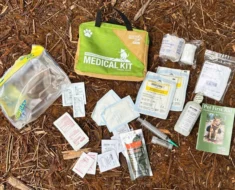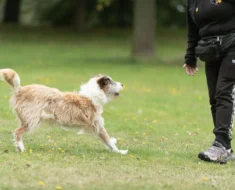Bringing a new dog into your home is an exciting time, but those first few days can feel overwhelming for both you and your furry friend. You want your dog to feel safe, calm, and loved, but adjusting to a new environment takes time.
That’s why building a decompression routine during the first 7 days is key. With the right steps, you can help your dog settle in smoothly, reduce stress, and create a strong bond from day one. Keep reading to discover simple, effective ways to ease your dog’s transition and set the stage for a happy life together.
Preparing Your Home For The New Dog
Start by choosing a quiet, low-traffic spotin your home. This will be your dog’s safe space. Use a soft bed or blanket to make it cozy. Keep toys and water nearby. This helps your dog feel calm and secureduring the first days.
Gather essential supplieslike a collar, leash, food, and treats. Don’t forget cleaning materials for accidents. Having everything ready avoids stress and confusion.
| Item | Purpose |
|---|---|
| Collar and Leash | Control and safety during walks |
| Food and Water Bowls | Designated feeding area |
| Toys | Entertainment and comfort |
| Cleaning Supplies | Quick accident cleanup |
Set up a feeding areaaway from the safe space. This helps your dog understand where to eat. Use clean bowlsand fresh water every day. Keep the area quiet and free from distractions.

Credit: www.ukuscadoggie.com
Introducing A Calm Environment
Keeping noise lowhelps dogs feel safe and less scared. Loud sounds can make them nervous. Try to keep the home quiet by closing windows and turning off loud machines. Soft music or white noise can help calm your dog.
Using gentle smellslike lavender or chamomile can soothe dogs. These scents create a peaceful space. Avoid strong or sharp smells that might upset them.
Visitors can cause stress. Limit people coming induring the first days. Too many new faces can confuse your dog. Let your new pet rest without interruptions.
Establishing A Consistent Schedule
Keeping a regular feeding timehelps your new dog feel safe. Feed your dog at the same times each day. This builds trust and lowers stress.
Scheduled walks and playtimegive your dog a chance to explore and burn energy. Short, calm walks work best in the first week. Play gently to build a bond.
Consistent rest periodsare just as important. Dogs need quiet time to adjust. Create a calm space where your dog can relax without noise or distractions.
Building Trust And Bonding
Gentle interactionhelps dogs feel safe and calm. Use a soft voice and slow movements. Let the dog come to you. Avoid sudden touches or loud noises. This builds trustquickly.
Positive reinforcementmeans giving treats or praise for good behavior. This encourages dogs to repeat actions you like. Use small treats and say “good job” kindly. It helps dogs learn what you want.
Reading canine body languageis key. Watch the dog’s ears, tail, and eyes. A wagging tail usually means happiness. A tucked tail or growling means fear or stress. Understanding these signs helps you respond well.
Monitoring Stress Signs
Common stress behaviorsin newly adopted dogs include trembling, hiding, and pacing. Some dogs may bark or growl more than usual. Watch for yawning, lip licking, or avoiding eye contact. These signs show your dog feels anxious or scared. Early detection helps prevent bigger problems.
Seek professional helpif your dog shows signs of aggression or extreme fear. If stress lasts more than a week, a vet or trainer can help. They offer advice tailored to your dog’s needs.
Adjust the routine by adding more quiet time or gentle play. Watch how your dog reacts to changes. A calm, patient approach helps your dog feel safe and loved. Keep routines simple and consistent to build trust.
Introducing New Experiences Gradually
Start by letting your dog explore one room at a time. Avoid opening all doors at once. This helps them feel safe and less scared.
Introduce family members slowly. Let the dog see them from a distance first. Then, allow gentle petting and calm voices. Watch for signs of stress.
Other pets need careful meetings too. Use leashes or barriers to keep control. Keep meetings short and calm. Praise good behavior to build trust.
Maintaining Progress Beyond Week One
Keep a daily log to track your dog’s behavior. Note any changes in mood, eating, and activity. This helps spot improvements or setbacks.
Change the routine slowly. Add new walks or playtimes based on your dog’s comfort. This keeps them calm and happyover time.
| Task | Purpose | When to Do |
|---|---|---|
| Observe behavior | See progress or issues | Daily |
| Adjust routine | Keep dog comfortable | Weekly or as needed |
| Plan training | Build good habits | After first week |

Credit: www.browndogcoalition.com

Credit: www.aspcapro.org
Frequently Asked Questions
How Soon Should I Start Decompressing My New Dog?
Start the decompression routine immediately after bringing your dog home. Early calm and patience help reduce stress and build trust quickly.
What Are Key Signs My Dog Needs Decompression?
Signs include anxiety, avoidance, excessive barking, or destructive behavior. These show your dog needs a calm, slow introduction to their new environment.
How Long Should Each Decompression Session Last?
Keep sessions short, around 10-15 minutes, multiple times daily. Gradually increase time as your dog becomes more relaxed and comfortable.
Can I Use Treats During Decompression?
Yes, treats are great for positive reinforcement. Use them to reward calm behavior and create positive associations in your dog’s new space.
Conclusion
Building a decompression routine helps your new dog feel safe and calm. Small steps each day create trust and reduce stress. Give your dog space and quiet time to adjust. Watch their body language and respect their limits. Consistency and patience make the first week easier for both of you.
A gentle routine sets the stage for a happy, strong bond. Keep routines simple and clear. Your new dog will thank you with love and loyalty.





